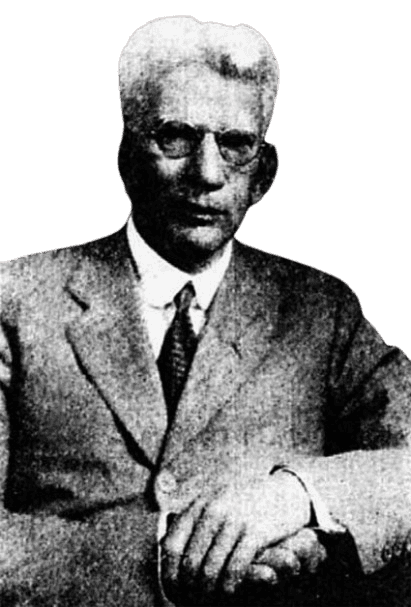Life and achievements
Early life
Robert Elmer Horton was born in Parma, Michigan, on May 18, 1875, to parents who placed a high premium on education. He received his B.Sc. from Albion College in 1897, majoring in engineering and hydrology. Before that, Horton worked for the U.S. Geological Survey, where he developed his interest in water systems and their effects on the land. In Horton's early career, he was greatly inspired by his uncle, George Rafter, a civil engineer, and together they authored Horton's first hydrological research. This particular mentorship initially shaped Horton's career in hydrology and civil engineering.
The first professional work of Horton was related to the water behavior with the land surface, which included precipitation and runoff. These early experiences formed the basis of his later work, which was to revolutionize the study of water distribution on land surfaces, calculate floods, and formulate measures to control erosion. Thus, Horton's education, which combined engineering fundamentals with scientific theories, was a perfect preparation for his career as an anthropologist who was able to combine field experience with theoretical knowledge.
Legacy
Robert E. Horton can be remembered for his basic concepts in hydrology, specifically in surface runoff, soil infiltration, and drainage basins. His work is still considered fundamental in the current hydrological science, particularly his models for the transition of rainfall into surface water flow and the impact on floods. Horton's laws of drainage networks, infiltration capacity, and overland flow are still being applied to estimate flood, soil erosion, and water conservation.
Due to Horton's commitment to applying research and theory to hydrology, many practical uses of the knowledge arose, especially about floods and erosion. Some theories he developed include infiltration capacity and surface runoff, which help assess water resources in urban, agricultural, and natural environments. In addition, his work can be credited for the advanced computer modeling used in current hydrological research, establishing that his work is timeless.
The Robert E. Horton Medal is given each year by the American Geophysical Union to individuals who have contributed extraordinarily to the field of hydrology and to make sure that Horton's name continues to challenge young scientists. His work not only enhanced the knowledge of water systems but also gave the means to control them better, helping in the establishment of rational water management all over the world.
Milestone moments
Feb 15, 1906
This paper presents early streamflow studies and weir experiments.
1906, R. E. Horton published Weir's Experiments, Coefficients, and Formulas, describing initial streamflow and hydraulic measurements. This was one of the first significant works that he contributed to hydrology as a discipline.
Horton's work on weir flow accurately determined stream discharge and paved the way for subsequent flood forecasting and water control research.
His presentation of hydraulic analysis showed that he could integrate actual observations with mathematical equations.
This early achievement established Horton as the premier hydrologist of his time, and his techniques remain relevant in the present hydraulic engineering and water resource management.
Feb 19, 1933
Publication of The Role of Infiltration in the Hydrologic Cycle
In 1933, Robert Horton published his paper titled The Role of Infiltration in the Hydrologic Cycle, where he described a new type of overland flow known today as Horton overland flow or infiltration-excess overland flow.
This paper changed the perception of how rainfall infiltrates the soil and how the excess water forms surface runoff, essential in predicting floods and soil erosion.
Horton's work influenced hydrology to become a science with more quantitative models.
Horton's idea of the infiltration model remains a fundamental principle in hydrology. It is used in various civil engineering contexts, including urban design and agricultural soil conservation.
Mar 22, 1939
Infiltration Capacity Equation Development
In 1939, Horton developed his predictive equation for infiltration capacity, a crucial step in improving the hydrological models used to predict the amount of rainfall infiltrating the ground or runoff.
Horton's infiltration capacity equation measured how much soil could absorb during rainfall, quantifying flood risks and helping manage water.
This was particularly essential for areas with heavy rain and flash floods.
It became popular in the field, and to this day, the equation is applied in modern hydrological research to evaluate the permeability of the soil and assess water management systems.
Oct 23, 1945
Classic Article about Drainage Basins and Erosional Evolution
In 1945, Horton published his final and most influential paper, Erosional Development of Streams and Their Drainage Basins: Hydrophysical Quantitative Morphology. This paper compiled works of scholars in runoff, drainage networks, and erosion for decades.
Horton presented his well-known laws of stream numbers and lengths, which were the keys to determining the formation of river systems and the impact of drainage basins on water flow.
These ideas formed the basis of the current quantitative geomorphic and stream chemistry studies.
This is one of the most essential publications in hydrology. It can be considered Horton's final work and legacy in the field.
